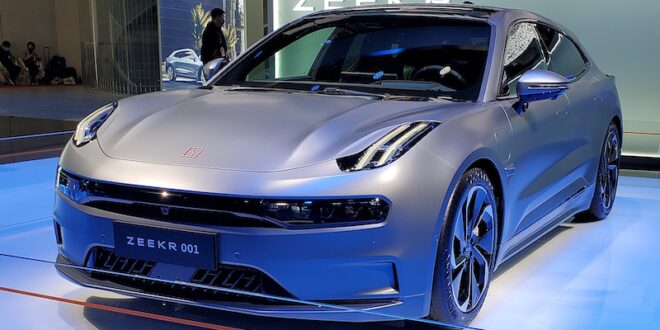The US and the EU have both recently announced punitive tariffs on electric vehicles (EVs) and other clean energy equipment imports from China. Canada is set to follow suit. The West is clearly determined to challenge China’s domination in clean energy by all possible means. This action-reaction cycle involves China taking a particular decision, which then triggers a response by Western actors. What does Chinese domination mean in practice? How is the West responding? What does this tug of war mean for the global clean energy transition?
Unpacking China’s Dominance
China dominates the global clean energy transition at three levels: clean energy production and deployment of low carbon technologies; manufacturing of clean energy equipment; and manufacturing of EVs. It is increasing renewable energy production and deploying low-carbon technologies. These technologies include wind and solar photovoltaic (PV), which accounted for 440 GW and 610 GW, respectively, of the total 2917 GW generation capacity in 2023. China installed 76 GW of wind and 216 GW of solar PV capacity in 2023 alone. In 2021, Chinese companies held eight of the top ten spots in the global solar company rankings. The amount of solar capacity added in 2023 exceeds the sum of all capacity additions in the history of most countries. Examples from other countries of total capacity additions up until 2023 were 157 GW in the US, 81 GW in India, 75 GW in Germany, and 15 GW in the UK.
Chinese companies accounted for 71 per cent of solar module, 78 per cent of solar cell, and 66 per cent of polysilicon in the global solar energy manufacturing sector. They also constitute 60 per cent of the world’s total (163 GW) wind turbine production capacity in 2023. Four Chinese wind turbine original equipment manufacturers (OEMs) rank in the top five worldwide. China is home to 90 per cent of the world’s rare earth resources, but it only mines 23 per cent of the raw materials required for battery production domestically. Still, it constitutes 73 per cent of total downstream lithium-ion battery production and already controls the midstream, from refinement to further manufacturing. Already, and as a result, it accounts for 70-80 per cent of global production shares.
China has invested US$230.8 billion to grow its EV industry. In 2023, China, the US, and Europe accounted for 95 per cent share of global EV sales, with China contributing 60 per cent. It is already the biggest market for EVs worldwide. In 2022 China sold 6.8 million EVs. In 2023, almost8.4 million new electric cars were registered in China. It has also exported around 1.2 million EVs to the world. Together, these made for 60 per cent of worldwide sales in 2023. Further, Beijing has now drastically reduced the price of EVs, creating a nightmare scenario for competitors in Europe and the US.
Unpacking the West’s Response
The West’s collective response is aimed at protecting their respective domestic markets, though they are visibly nervous about China’s inroads into overseas markets as well. Western actors are concentrating on increasing clean energy installations, raising tariffs on Chinese imports, protecting domestic manufacturers and markets, and most importantly, implementing laws to delink and de-risk domestic production.
US tariffs on Chinese EVs will quadruple this year, from 25 to 100 per cent, to protect American manufacturers from Chinese trade practices. The latest set of US tariffs will also apply to EV batteries and solar cells. The EU has imposed punitive tariffs of up to 38 per cent on EV imports from China, accusing Beijing of “unfair” subsidies that created overcapacity, distorted the market, and harmed EU companies. Canada has meanwhile identified “potential policy responses” to Chinese trade practices. During a G7 finance ministers’ meeting in Italy, US Treasury Secretary Janet Yellen urged the US and Europe to respond to China’s industrial overcapacity in a “strategic and unified way” to keep manufacturers on both sides of the Atlantic viable.
The US has passed several legislations, such as the Inflation Reduction Act, to scale up EV demand by providing tax credits of up to US$ 7,500 per vehicle, subject to certain manufacturing conditions, including material sourcing requirements. Combined with the Foreign Entity of Concern legislation, these target the lithium battery industry and seek to de-link it from Chinese dominance. The US Minerals Security Partnership and the EU Critical Raw Materials Act are also intended to protect their markets by de-linking and de-risking domestic industries from Chinese exports.
Implications for Clean Energy
China has offered heavy subsidies to manufacturers, incentivised its public to adopt cleaner sources, and made large-scale investment in technology and R&D. These have admittedly helped the global energy transition pick up pace. These same steps, however, have also led to China’s domination in the sector, creating geopolitical competition in energy with the west. China, the US, and the EU vying to dominate the market for clean energy goods could very well delay the global energy transition. To gain strategic advantage, both sets of actors, i.e. China and the US and EU, will attempt to ensure a critical raw material supply chain that is secure for themselves but vulnerable to others, making it unstable for everyone. Intense competition can also result in unsafe mining practices that reduce cost but risk severe environmental damages.
To course correct, China must see the wisdom in investing in Western companies to encourage their technical development. Meanwhile, the West must acknowledge the wisdom of easing tariffs and the trade war unleashed against China’s clean energy imports.
 Eurasia Press & News
Eurasia Press & News


